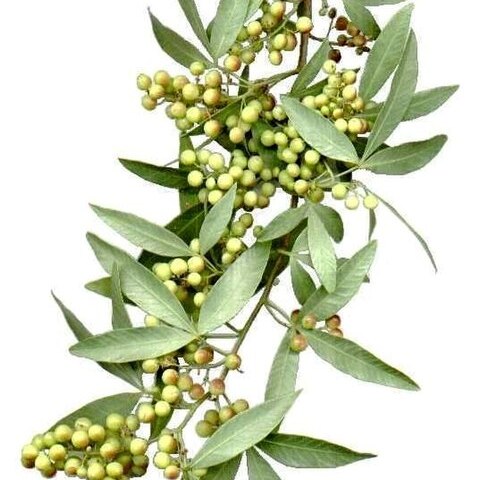An evergreen shrub or small tree. It grows 4-10 m high. It has a single stem but can have several stems. It can form thickets. It often loses many leaves during the year. The crown is round with drooping branches. The bark is grey-brown. The side shoots on young stems often have spines. The leaves are alternate. The leaves have 3 leaflets. The leaflets do not have stalks. The leaves are dull green above. The leaf stalks are 4 cm long. The end leaflet is sword shaped. It is 3-9 cm long by 0.6-1.5 cm wide. It tapers to the tip. The flowers are in panicles. They are small and greenish-yellow. Male and female flowers are on separate plants. They are in branched groups in the axils of leaves or near the ends of branches. These are 9 cm long and are furry. The fruit is fleshy with a stone inside. It is round and red but dries black. They are 3 mm across.
Tree, up to 10 m high. Bark pale, flaky and trunk often spinous. Leaflets sessile; blade membranous, glabrous, concolorous, dull green above, slightly paler below, narrowly ovate, base cuneate, apex acute; terminal leaflet (21-)58(-95) x (6-)11 (-15) mm. Flowers: Feb., Mar. Fruit a widely ellipsoid, glabrous drupe, reddish, drying black.
Dioecious, evergreen shrub or tree, up to 12 m tall, with occasional spines on trunk. Leaves trifoliolate, leaflets sessile, lanceolate, dull green above, slightly paler below, smooth. Flowers greenish yellow. Drupe round, smooth, drying black.
Dioecious, evergreen shrub or tree to 12 m. Leaves trifoliolate, leaflets sessile, lanceolate. Flowers greenish yellow. Drupes round, smooth.


